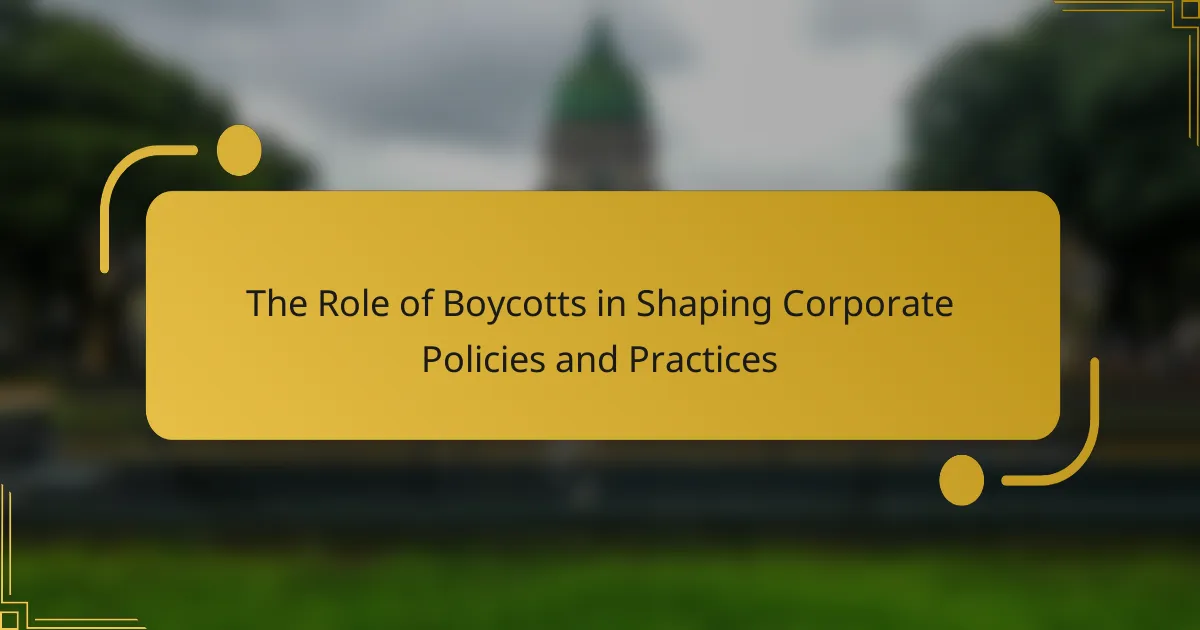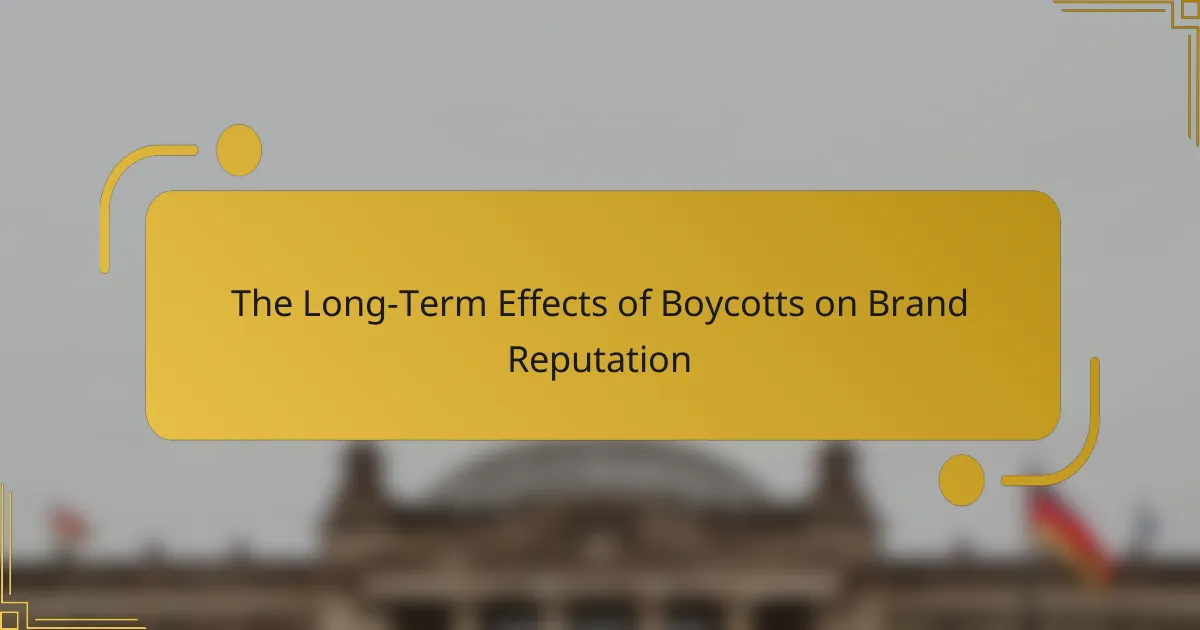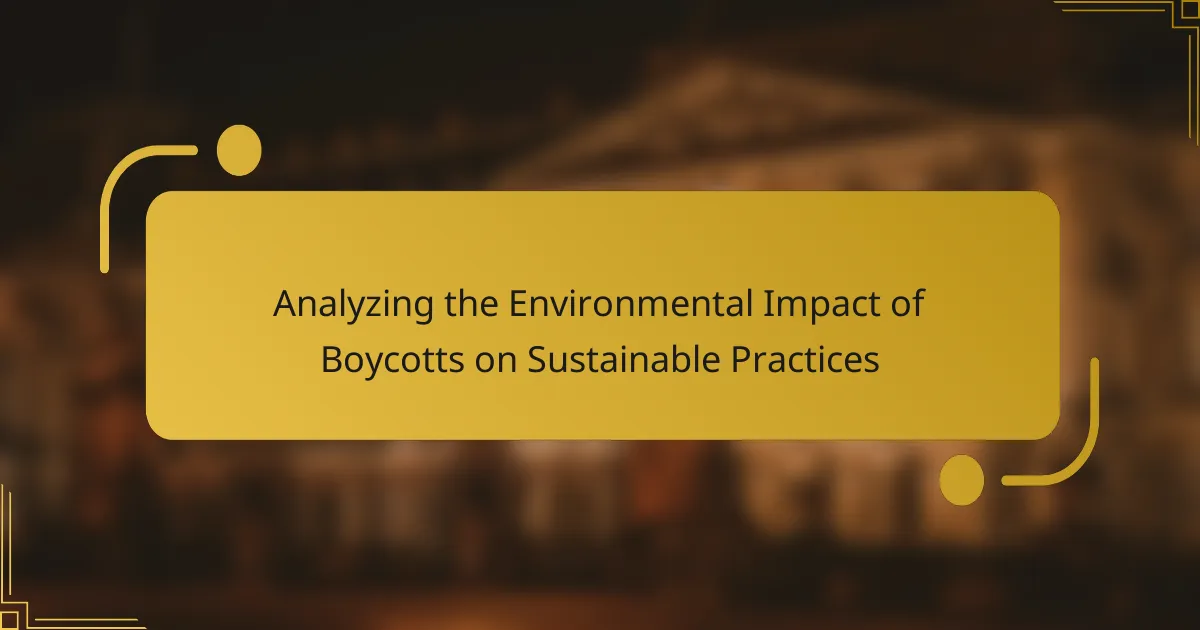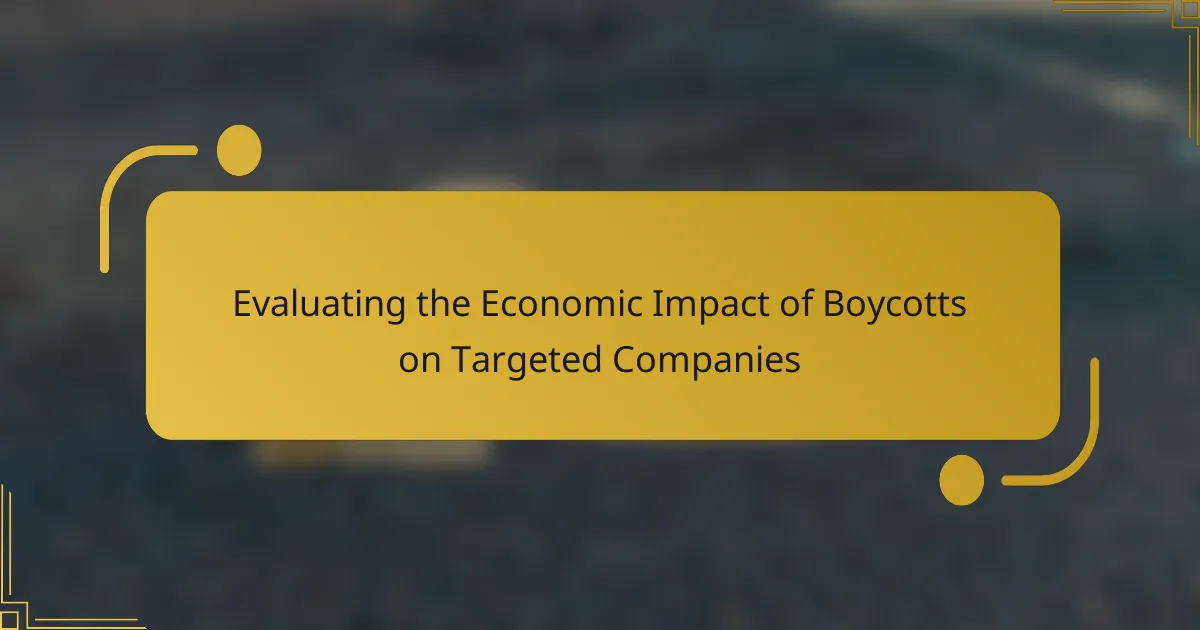Boycotts play a crucial role in shaping corporate policies by harnessing the collective power of consumers to demand accountability and change. When faced with significant consumer backlash, companies often reassess their practices to mitigate financial losses and protect their reputations. Historical examples, such as the boycott against South African apartheid and campaigns against labor practices, illustrate the effectiveness of organized consumer action in driving corporate reform.

How do boycotts influence corporate policies in the United States?
Boycotts significantly impact corporate policies in the United States by compelling companies to respond to consumer demands and social issues. When consumers collectively refuse to purchase products or services from a company, it can lead to financial losses and reputational damage, prompting a reevaluation of policies and practices.
Increased accountability
Boycotts hold corporations accountable for their actions, particularly regarding social and environmental issues. When consumers unite against a company’s practices, it forces the organization to address concerns such as labor rights, environmental sustainability, and ethical sourcing. This increased scrutiny often leads to more transparent reporting and improved corporate governance.
For example, companies like Nike and Starbucks have faced boycotts that prompted them to adopt better labor practices and more sustainable sourcing methods. As a result, they have implemented policies that reflect a commitment to social responsibility.
Changes in product offerings
Boycotts can lead to significant changes in a company’s product offerings as they respond to consumer preferences and ethical concerns. Companies may discontinue controversial products or introduce new lines that align with the values of their customers. This shift not only helps to mitigate backlash but can also attract new consumers who prioritize ethical consumption.
For instance, after facing boycotts over environmental concerns, some beverage companies have shifted to using more sustainable packaging and reduced plastic use. This change not only addresses consumer demands but also positions them favorably in a market increasingly focused on sustainability.
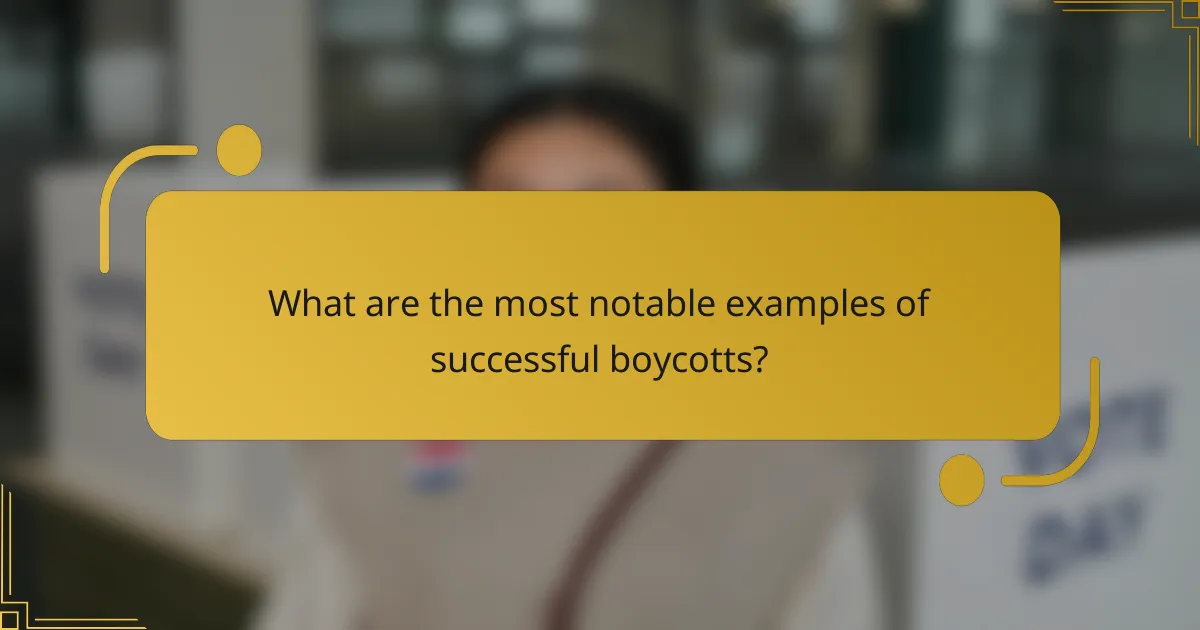
What are the most notable examples of successful boycotts?
Successful boycotts have historically influenced corporate policies and practices by leveraging consumer power. Notable examples include the South African apartheid boycott and the campaign against Nike’s labor practices, both of which prompted significant changes in corporate behavior.
South African apartheid boycott
The boycott against South African goods during the apartheid era is one of the most impactful examples of consumer activism. Initiated in the 1980s, this global movement aimed to pressure the South African government to end racial segregation and discrimination. As consumers refused to purchase products from companies operating in South Africa, many corporations faced financial losses, leading them to withdraw from the country.
This boycott not only raised awareness about the injustices of apartheid but also demonstrated how collective consumer action can drive political and social change. The economic pressure contributed to the eventual dismantling of apartheid and the establishment of a democratic government in the early 1990s.
Nike and labor practices
Nike faced intense scrutiny in the 1990s over allegations of poor labor practices in its overseas factories, particularly in countries like Indonesia and Vietnam. Activists organized boycotts and campaigns to highlight issues such as low wages, unsafe working conditions, and child labor. These actions prompted significant public backlash and media coverage, putting pressure on Nike to improve its labor standards.
In response, Nike implemented changes to its corporate policies, including better monitoring of factories and increased transparency regarding labor practices. The company also began to engage with non-governmental organizations to improve conditions for workers, illustrating how consumer boycotts can lead to meaningful corporate reforms.
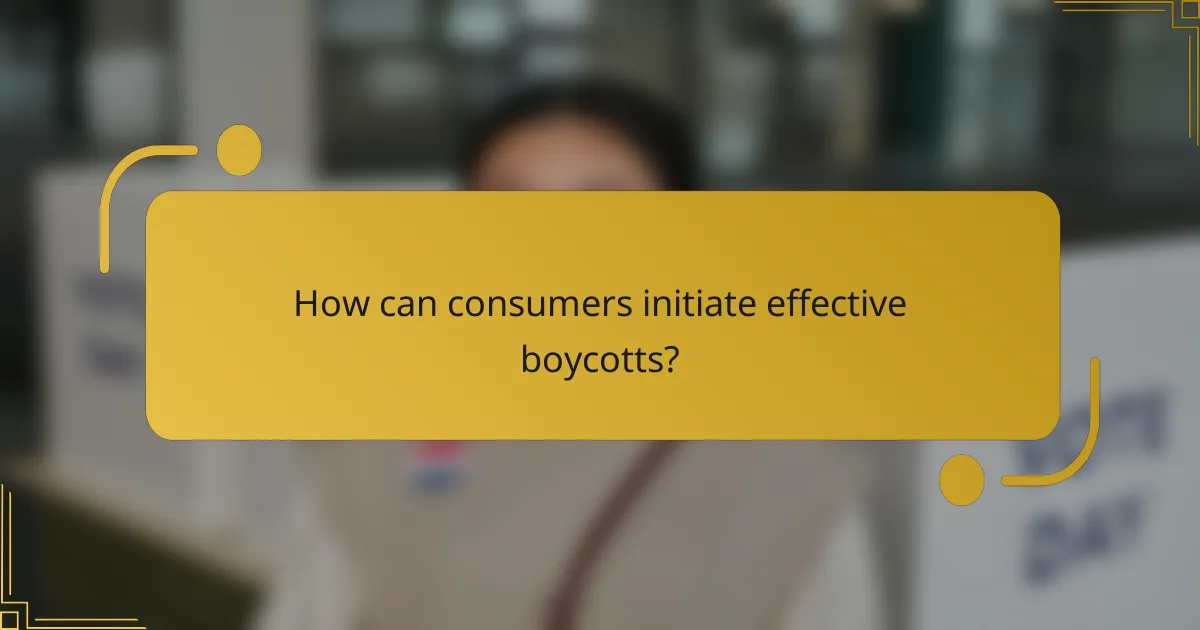
How can consumers initiate effective boycotts?
Consumers can initiate effective boycotts by organizing collective action against companies whose practices they oppose. This involves identifying specific issues, rallying support, and leveraging social media to amplify their message.
Identifying target companies
To identify target companies for a boycott, consumers should focus on those that engage in practices contrary to their values, such as unethical labor practices, environmental harm, or discrimination. Researching a company’s history and current policies can provide insights into which organizations warrant attention.
Consider creating a list of companies that have faced public backlash or legal issues related to the targeted practice. This can help prioritize efforts and ensure that the boycott is directed at companies with a significant impact or visibility.
Mobilizing social media campaigns
Social media is a powerful tool for mobilizing boycotts. Consumers can create hashtags, share informative content, and engage with like-minded individuals to spread awareness about the boycott. Platforms like Twitter, Facebook, and Instagram can amplify messages quickly and reach a broad audience.
To enhance the effectiveness of a social media campaign, it’s crucial to maintain consistent messaging and provide clear calls to action. Encourage followers to share their reasons for participating in the boycott, which can create a sense of community and urgency around the cause.
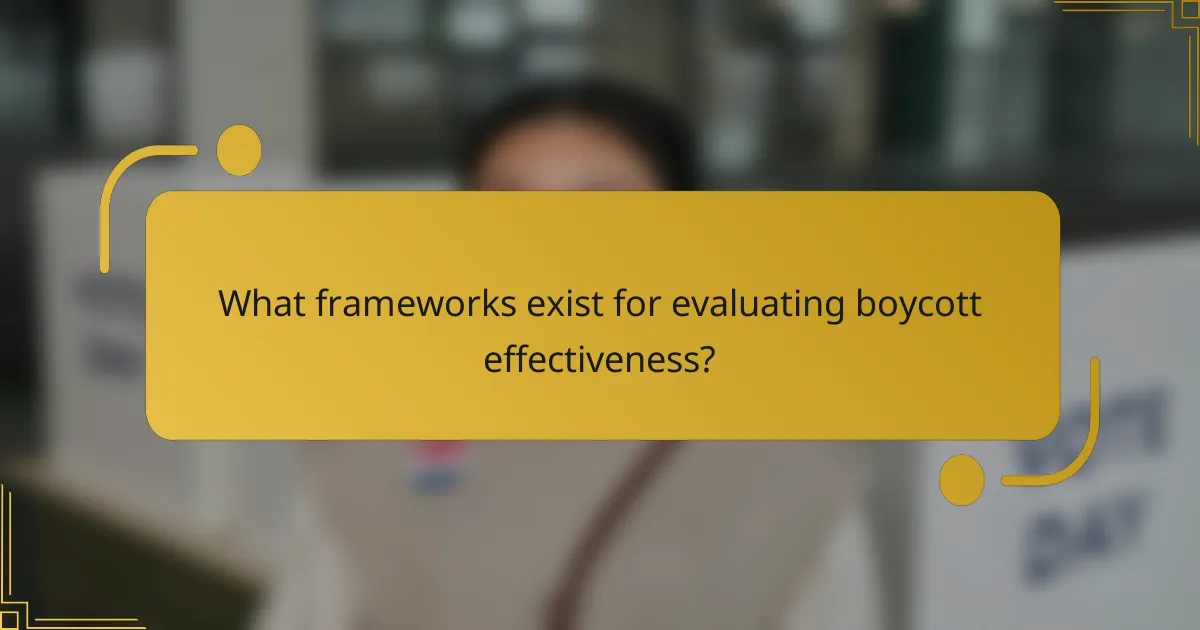
What frameworks exist for evaluating boycott effectiveness?
Evaluating the effectiveness of boycotts involves several frameworks that assess their impact on corporate policies and practices. These frameworks typically focus on measurable outcomes, consumer engagement, and the overall response from the targeted companies.
Impact assessment metrics
Impact assessment metrics are essential for determining how successful a boycott has been in influencing corporate behavior. Common metrics include changes in sales figures, stock prices, and public sentiment analysis. For instance, a significant drop in sales or a negative shift in stock performance can indicate that a boycott is having a tangible effect.
Additionally, surveys and social media analytics can provide insights into public perception and awareness of the boycott. Tracking these metrics over time helps activists understand the boycott’s trajectory and adjust strategies accordingly.
Consumer engagement levels
Consumer engagement levels are crucial in evaluating the effectiveness of a boycott. High levels of participation, such as the number of individuals actively refusing to purchase products or services, can signal strong public support. Engagement can be measured through social media interactions, participation in organized events, and the volume of petitions signed.
Effective communication strategies, such as clear messaging and targeted outreach, can enhance consumer engagement. For example, campaigns that leverage social media platforms to mobilize supporters often see higher participation rates. Understanding the demographics and motivations of engaged consumers can also help tailor future actions for greater impact.

What role do social movements play in shaping boycotts?
Social movements are crucial in initiating and sustaining boycotts, as they mobilize public sentiment and organize collective action against corporations. By raising awareness and advocating for change, these movements can significantly influence corporate policies and practices.
Grassroots organization
Grassroots organizations often serve as the backbone of boycott efforts, leveraging community engagement to amplify their message. These groups typically rely on local networks to spread awareness and encourage participation, making their campaigns more relatable and impactful.
Effective grassroots strategies may include organizing rallies, distributing informational materials, and utilizing social media platforms to reach a broader audience. By fostering a sense of community and shared purpose, grassroots organizations can drive significant consumer action against targeted companies.
Influence of advocacy groups
Advocacy groups play a vital role in shaping the narrative around boycotts by providing research, resources, and strategic guidance. These organizations often focus on specific issues, such as environmental sustainability or labor rights, and help frame the boycott’s goals to resonate with the public.
Additionally, advocacy groups can leverage their networks to mobilize larger audiences and gain media attention, which can further pressure corporations to change their practices. Collaborating with these groups can enhance the effectiveness of a boycott, as they often have established credibility and expertise in their respective fields.

How do boycotts affect corporate reputation?
Boycotts can significantly impact a corporation’s reputation by influencing public perception and consumer trust. When consumers unite to boycott a brand, it often leads to immediate negative publicity, which can tarnish the company’s image and affect its bottom line.
Short-term backlash
In the short term, boycotts typically result in a backlash against the targeted company. This can manifest as a drop in sales, increased negative media coverage, and a surge in social media criticism. For instance, a company facing a boycott may see sales decline by a notable percentage, especially if the issue resonates with a large consumer base.
Companies often react quickly to mitigate damage, which may include public apologies, changes in policies, or increased transparency. However, these responses must be genuine; insincerity can exacerbate the backlash and lead to further reputational harm.
Long-term brand loyalty shifts
Long-term effects of boycotts can lead to shifts in brand loyalty, either positively or negatively. If a company successfully addresses the concerns raised by the boycott, it may strengthen its relationship with consumers who value corporate responsibility. This can result in increased loyalty from those who appreciate the changes made.
Conversely, if a company fails to respond adequately, it risks losing a significant portion of its customer base permanently. Brands that ignore consumer sentiment may find it challenging to regain trust, leading to a long-lasting decline in brand loyalty. Companies should monitor consumer feedback and adapt their practices to align with evolving public expectations.

What emerging trends are shaping future boycotts?
Emerging trends in boycotts are increasingly influenced by digital activism and the integration of corporate social responsibility (CSR). These trends reflect a shift in how consumers engage with brands, pushing companies to adapt their policies and practices to align with public expectations.
Digital activism growth
The rise of digital activism has transformed the landscape of boycotts, allowing movements to gain momentum rapidly through social media platforms. Consumers can now organize and amplify their messages, reaching wider audiences and increasing pressure on corporations to respond.
For example, hashtags related to specific issues can trend quickly, mobilizing thousands of individuals to participate in coordinated actions against companies. This digital engagement often leads to immediate consequences for brands, making them more responsive to consumer concerns.
Corporate social responsibility integration
As boycotts gain traction, many companies are integrating corporate social responsibility into their core strategies. This shift means that businesses are not only reacting to boycotts but proactively addressing social and environmental issues to prevent them.
Companies that embrace CSR often see benefits such as improved brand loyalty and customer trust. For instance, brands that publicly commit to sustainable practices or social equity initiatives may mitigate the risk of boycotts by aligning their operations with consumer values.
